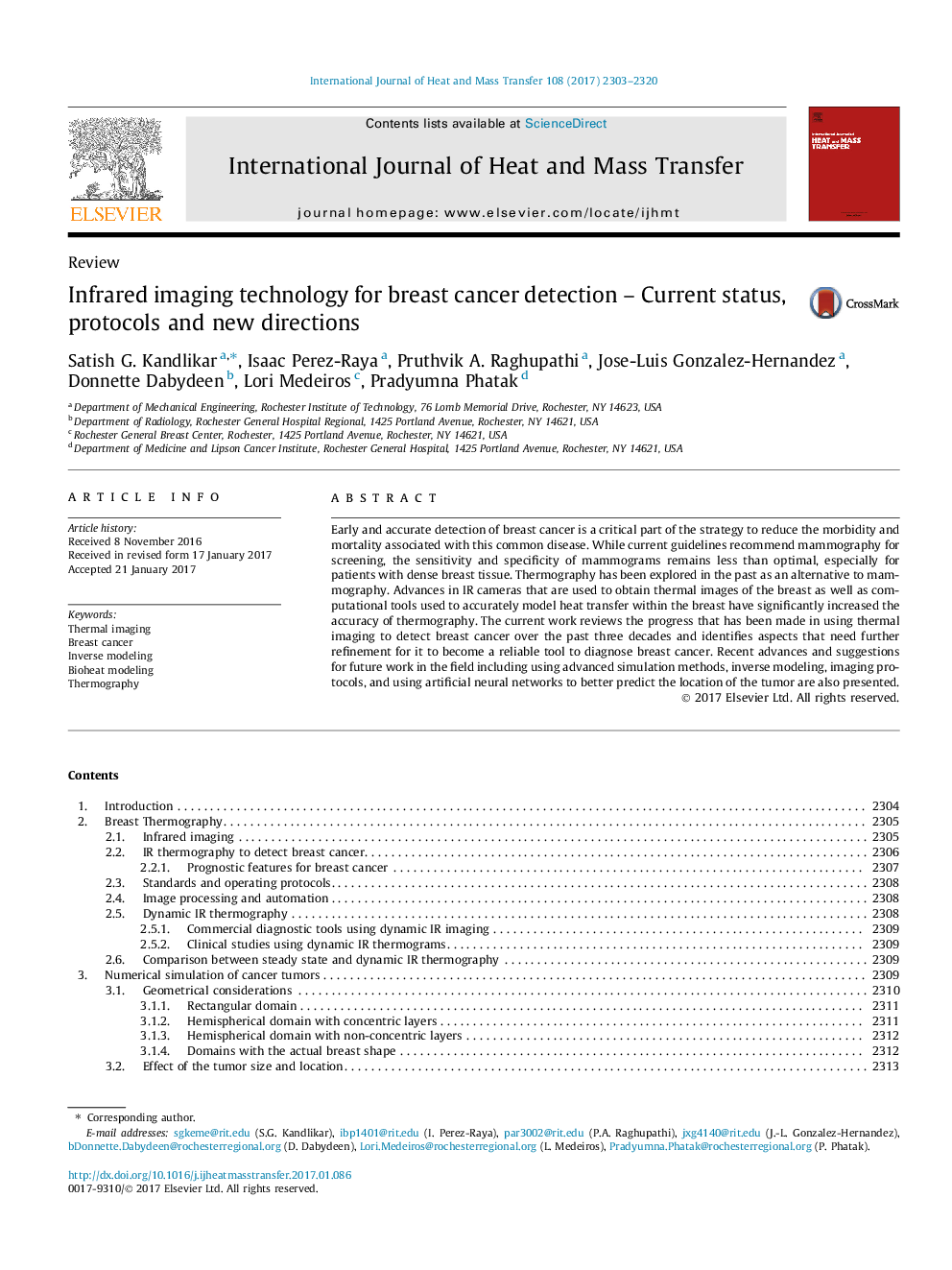| Article ID | Journal | Published Year | Pages | File Type |
|---|---|---|---|---|
| 4994355 | International Journal of Heat and Mass Transfer | 2017 | 18 Pages |
Abstract
Early and accurate detection of breast cancer is a critical part of the strategy to reduce the morbidity and mortality associated with this common disease. While current guidelines recommend mammography for screening, the sensitivity and specificity of mammograms remains less than optimal, especially for patients with dense breast tissue. Thermography has been explored in the past as an alternative to mammography. Advances in IR cameras that are used to obtain thermal images of the breast as well as computational tools used to accurately model heat transfer within the breast have significantly increased the accuracy of thermography. The current work reviews the progress that has been made in using thermal imaging to detect breast cancer over the past three decades and identifies aspects that need further refinement for it to become a reliable tool to diagnose breast cancer. Recent advances and suggestions for future work in the field including using advanced simulation methods, inverse modeling, imaging protocols, and using artificial neural networks to better predict the location of the tumor are also presented.
Related Topics
Physical Sciences and Engineering
Chemical Engineering
Fluid Flow and Transfer Processes
Authors
Satish G. Kandlikar, Isaac Perez-Raya, Pruthvik A. Raghupathi, Jose-Luis Gonzalez-Hernandez, Donnette Dabydeen, Lori Medeiros, Pradyumna Phatak,
